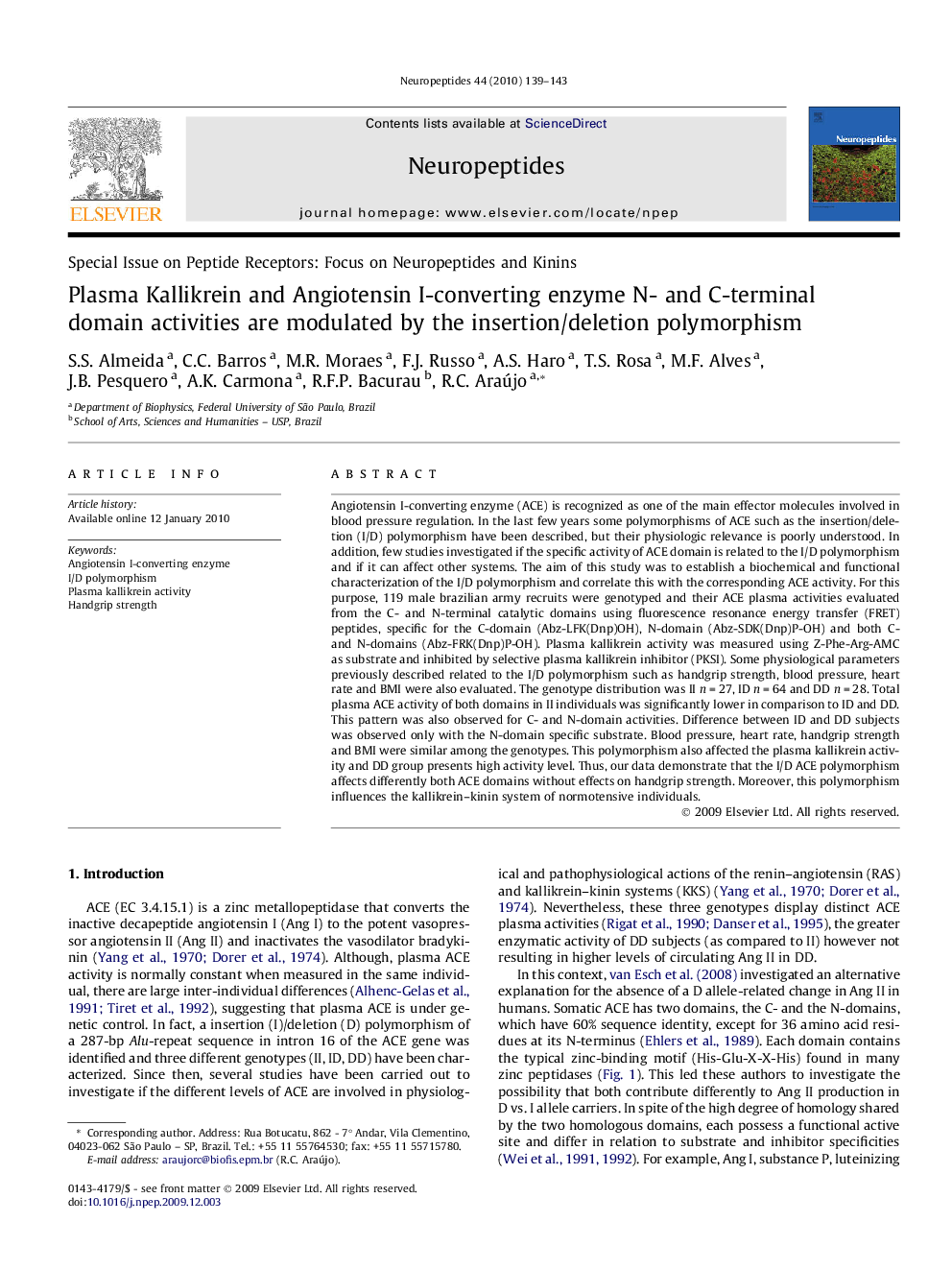| Article ID | Journal | Published Year | Pages | File Type |
|---|---|---|---|---|
| 2808239 | Neuropeptides | 2010 | 5 Pages |
Angiotensin I-converting enzyme (ACE) is recognized as one of the main effector molecules involved in blood pressure regulation. In the last few years some polymorphisms of ACE such as the insertion/deletion (I/D) polymorphism have been described, but their physiologic relevance is poorly understood. In addition, few studies investigated if the specific activity of ACE domain is related to the I/D polymorphism and if it can affect other systems. The aim of this study was to establish a biochemical and functional characterization of the I/D polymorphism and correlate this with the corresponding ACE activity. For this purpose, 119 male brazilian army recruits were genotyped and their ACE plasma activities evaluated from the C- and N-terminal catalytic domains using fluorescence resonance energy transfer (FRET) peptides, specific for the C-domain (Abz-LFK(Dnp)OH), N-domain (Abz-SDK(Dnp)P-OH) and both C- and N-domains (Abz-FRK(Dnp)P-OH). Plasma kallikrein activity was measured using Z-Phe-Arg-AMC as substrate and inhibited by selective plasma kallikrein inhibitor (PKSI). Some physiological parameters previously described related to the I/D polymorphism such as handgrip strength, blood pressure, heart rate and BMI were also evaluated. The genotype distribution was II n = 27, ID n = 64 and DD n = 28. Total plasma ACE activity of both domains in II individuals was significantly lower in comparison to ID and DD. This pattern was also observed for C- and N-domain activities. Difference between ID and DD subjects was observed only with the N-domain specific substrate. Blood pressure, heart rate, handgrip strength and BMI were similar among the genotypes. This polymorphism also affected the plasma kallikrein activity and DD group presents high activity level. Thus, our data demonstrate that the I/D ACE polymorphism affects differently both ACE domains without effects on handgrip strength. Moreover, this polymorphism influences the kallikrein–kinin system of normotensive individuals.
